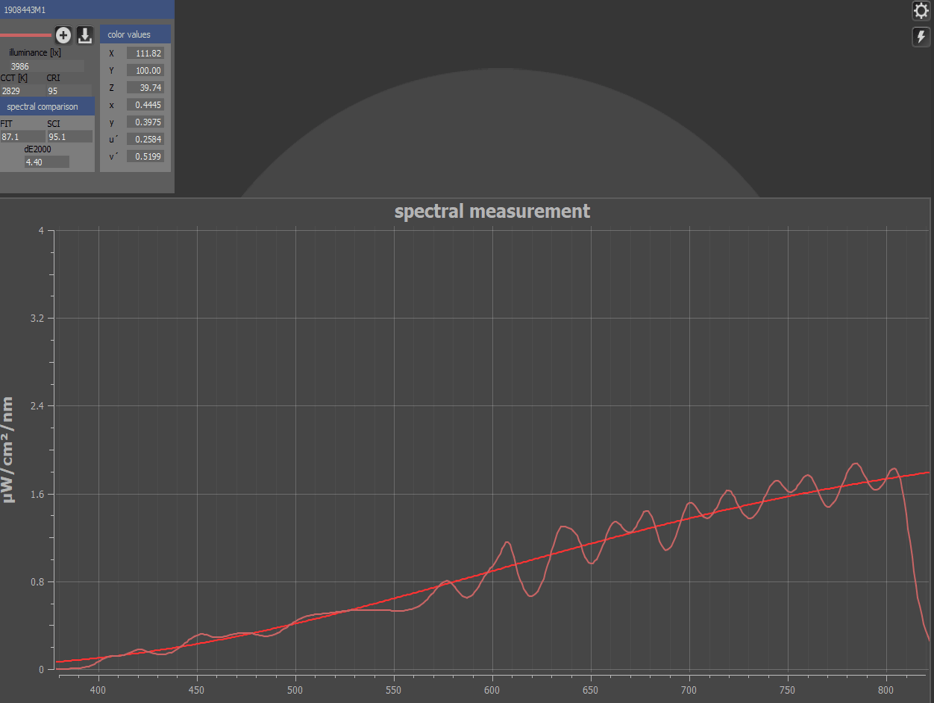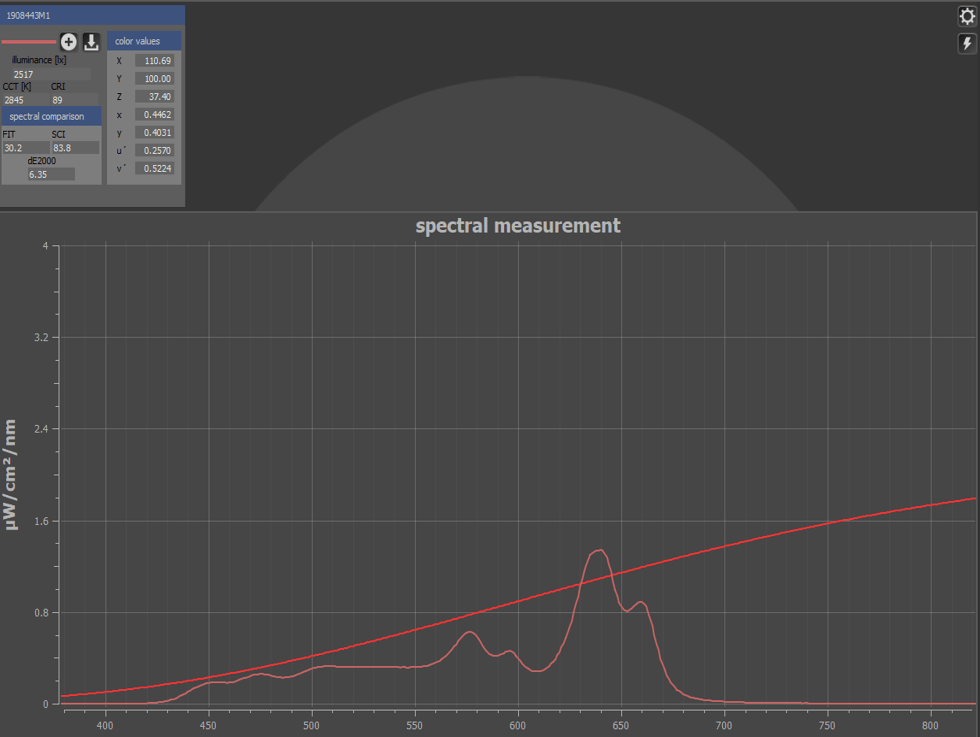During any product development, it is important to define specific requirements that the product must fulfill to ensure high quality. When using the iQ-LED, you should create the illuminants as close to the desired spectrum as possible and then define a requirement based on a certain parameter. We are often asked what parameter best represents a generated spectrum that is close to the desired spectrum.
The following example images demonstrate the same illuminant generated using different methods. It is important to be aware that even when a parameter is a better fit, it does not necessarily mean that the spectrum is reproduced more accurately.
Figure 1 displays standard illuminant A that has been generated with iQ-LED (spectrum 1). Figure 2, meanwhile, depicts a spectrum that has been manually adjusted using the channel sliders (spectrum 2). Spectrum 2 shows a substantial difference to the shape and N-IR content of the standard illuminant A. As a result, spectrum 1 is a much better choice for camera characterization or calibration.


If, however, you compare the CCT or the x and y chromaticity coordinates of the spectra, the results favor spectrum 2 as shown in the following table.

The FIT parameter is a much better representation of the observed behavior. The FIT of spectrum 1 is 87,1 compared to that of 30,2 for spectrum 2.
How is this possible? Essentially, the CIE x and y chromaticity coordinates and the CCT can be matched by having a few narrow-band light sources that only need to cover the color space of the color. Unfortunately, this procedure is not sufficient when wanting to create an accurate continuous spectrum that most standard illuminants have.
The FIT is calculated using the Root Mean Square (RMS) and is expressed as a percentage. It compares the generated and the target spectrum for each measured wavelength thus taking into account the narrow-band light sources. Due to this specific characteristic, the FIT parameter is also adapted into our iQ-LED devices for the optimization of the generated spectra. Generating illuminants based on x and y chromaticity coordinates would lead to less deviation from these parameters but could sometimes cause higher variations of the spectrum.
iQ-LED SW version 3.3.1 will include a new calculation of the FIT value called “global fit.” The original fit calculation still exists and is called “local fit”. For more detailed information about the differences of the FIT parameter and their calculation, please refer to the iQ-LED calculation of fit parameter guide (global vs. local).
Conclusion
Before defining the parameters of your test requirements, we recommend checking which parameters actually matter and are reliable. Although the CCT and the x and y chromaticity coordinates are very appealing due to them being well established by scientists and engineers, it may be more beneficial to take the FIT into account when defining your parameters.
If you have more questions about the FIT, please contact our support team.

